A Flexible, Microfluidic, Dispensing System for Screening Drug Combinations
Abstract
1. Introduction
- Measure every combination without dilutions.
- Measure every meaningful combination with dilutions.
- For large numbers of droplets, measure 1 and 2 with machine learning.
- For 3 measure single dilutions first, then next dilution until synergy is found.
2. Three-by-Three Example
- Circumferential movements: movement from one well to another well on the same ring,
- Radial movements: movement from a well on one ring to a well on a different ring,
- Mixed movements: a combination of radial and circumferential movements.
3. Discrete Analysis
4. Reducing the Number of Combinations by Dilutions
5. Commercial Instrument
6. Machine Learning
7. Conclusions
8. Patents
Author Contributions
Funding
Conflicts of Interest
Nomenclature
| Symbol | Description |
| Nc | Number of circumferential movements |
| Nc′ | Number of circumferential movements with dilutions |
| Ndil | Number of dilutions |
| Nr | Number of radial movements |
| Nr′ | Number of radial movements with dilutions |
| Nrad | Number of radii of the configuration |
| Nring | Number of rings of the configuration |
| Np | Number of positions the system must perform |
| Nwell | Number of wells |
| Number of droplets formed radially | |
| Number of droplets formed radially with dilutions | |
| Number of droplets formed circumferentially | |
| Number of droplets formed circumferentially with dilutions | |
| nCr | Number of droplets without dilutions |
| nCr′ | Number of droplets with dilutions |
| n | Number of wells on the system |
| r | Number of combinations |
| z | Shuttle dispensing direction |
| R | Radial movements, radial direction |
| θ | Angular movements |
References
- Goutsouliak, K.; Veeraraghavan, J.; Sethunath, V.; De Angelis, C.; Osborne, C.K.; Rimawi, M.F.; Schiff, R. Towards Personalized Treatment for Early Stage HER2-Positive Breast Cancer. Nat. Rev. Clin. Oncol. 2019, 17, 233–250. [Google Scholar] [CrossRef] [PubMed]
- Freedberg, K.A.; Losina, E.; Weinstein, M.C.; Paltiel, A.D.; Cohen, C.J.; Seage, G.R.; Craven, D.E.; Zhang, H.; Kimmel, A.D.; Goldie, S.J. The Cost Effectiveness of Combination Antiretroviral Therapy for HIV Disease. N. Engl. J. Med. 2001, 344, 824–831. [Google Scholar] [CrossRef] [PubMed]
- Alven, S.; Aderibigbe, B. Combination Therapy Strategies for the Treatment of Malaria. Molecules 2019, 24, 3601. [Google Scholar] [CrossRef] [PubMed]
- Folkesson, E.; Niederdorfer, B.; Nakstad, V.T.; Thommesen, L.; Klinkenberg, G.; Lægreid, A.; Flobak, Å. High-Throughput Screening Reveals Higher Synergistic Effect of MEK Inhibitor Combinations in Colon Cancer Spheroids. Sci. Rep. 2020, 10, 11574. [Google Scholar] [CrossRef] [PubMed]
- Neutel, J. Advantages of Combination Therapy Compared with Monotherapy. In Combination Therapy in Hypertension; Springer Healthcare: Tarporley, UK, 2011; pp. 23–35. [Google Scholar] [CrossRef]
- Schmid, A.; Wolfensberger, A.; Nemeth, J.; Schreiber, P.W.; Sax, H.; Kuster, S.P. Monotherapy versus Combination Therapy for Multidrug-Resistant Gram-Negative Infections: Systematic Review and Meta-Analysis. Sci. Rep. 2019, 9, 1–11. [Google Scholar] [CrossRef]
- Sun, W.; Sanderson, P.; Zheng, W. Drug Combination Therapy Increases Successful Drug Repositioning. Drug Discov. Today 2016, 21, 1189–1195. [Google Scholar] [CrossRef]
- Clarke, P.A.; Roe, T.; Swabey, K.; Hobbs, S.M.; McAndrew, C.; Tomlin, K.; Westwood, I.; Burke, R.; van Montfort, R.; Workman, P. Dissecting Mechanisms of Resistance to Targeted Drug Combination Therapy in Human Colorectal Cancer. Oncogene 2019, 38, 5076–5090. [Google Scholar] [CrossRef] [PubMed]
- Chan, I.S.; Ginsburg, G.S. Personalized Medicine: Progress and Promise. Annu. Rev. Genom. Hum. Genet. 2011, 12, 217–244. [Google Scholar] [CrossRef] [PubMed]
- Gorshkov, K.; Chen, C.Z.; Marshall, R.E.; Mihatov, N.; Choi, Y.; Nguyen, D.-T.; Southall, N.; Chen, K.G.; Park, J.K.; Zheng, W. Advancing Precision Medicine with Personalized Drug Screening. Drug Discov. Today 2019, 241, 272–278. [Google Scholar] [CrossRef]
- Schork, N.J. Personalized Medicine: Time for One-Person Trials. Nature 2015, 520, 609–611. [Google Scholar] [CrossRef]
- Redekop, W.K.; Mladsi, D. The Faces of Personalized Medicine: A Framework for Understanding Its Meaning and Scope. Value Health 2013, 16, S4–S9. [Google Scholar] [CrossRef]
- Weatherall, D.; Bodmer, W.; Breckenridge, A.K.; Davies, D.; Pirmohamed, M.; Wilkie, A. Recent Developments in Personalised Medicine, Royal Society. Available online: https://royalsociety.org/-/media/policy/Publications/2015/personalised-medicine-report.pdf (accessed on 17 March 2020).
- Fang, Y.; Eglen, R.M. Three-Dimensional Cell Cultures in Drug Discovery and Development. Slas Discov. Adv. Life Sci. R D 2017, 22, 456–472. [Google Scholar] [CrossRef]
- Lehmann, R.; Lee, C.M.; Shugart, E.C.; Benedetti, M.; Charo, R.A.; Gartner, Z.; Hogan, B.; Knoblich, J.; Nelson, C.M.; Wilson, K.M. Human Organoids: A New Dimension in Cell Biology. Mol. Biol. Cell 2019, 30, 1129–1137. [Google Scholar] [CrossRef] [PubMed]
- Takebe, T.; Wells, J.M. Organoids by Design. Science 2019, 364, 956–959. [Google Scholar] [CrossRef] [PubMed]
- Feala, J.D.; Cortes, J.; Duxbury, P.M.; Piermarocchi, C.; McCulloch, A.D.; Paternostro, G. Systems Approaches and Algorithms for Discovery of Combinatorial Therapies. Wiley Interdiscip. Rev. Syst. Biol. Med. 2010, 2, 181–193. [Google Scholar] [CrossRef]
- Pemovska, T.; Bigenzahn, J.W.; Superti-Furga, G. Recent Advances in Combinatorial Drug Screening and Synergy Scoring. Curr. Opin. Pharmacol. 2018, 42, 102–110. [Google Scholar] [CrossRef]
- Sun, J.; Warden, A.R.; Ding, X. Recent Advances in Microfluidics for Drug Screening. Biomicrofluidics 2019, 13, 061503. [Google Scholar] [CrossRef]
- Sinha, S.; Vohora, D. Drug Discovery and Development. In Pharmaceutical Medicine and Translational Clinical Research; Academic Press: New York, NY, USA, 2018; pp. 19–32. [Google Scholar] [CrossRef]
- Velleman, D.J. Exponential vs. Factorial. Am. Math. Mon. 2006, 113, 689. [Google Scholar] [CrossRef]
- Cliffe, F.E.; Lyons, M.; Murphy, D.C.; McInerney, L.; Hurley, N.; Galvin, M.A.; Mulqueen, J.; Bible, L.B.; Marella, C.; Kelleher, M.; et al. Droplet Combinations: A Scalable Microfluidic Platform for Biochemical Assays. SLAS Technol. Transl. Life Sci. Innov. 2019, 25, 140–150. [Google Scholar] [CrossRef]
- Wildey, M.J.; Haunso, A.; Tudor, M.; Webb, M.; Connick, J.H. High-Throughput Screening. Annu. Rep. Med. Chem. 2017, 50, 149–195. [Google Scholar] [CrossRef]
- Clausell-Tormos, J.; Lieber, D.; Baret, J.-C.; El-Harrak, A.; Miller, O.J.; Frenz, L.; Blouwolff, J.; Humphry, K.J.; Köster, S.; Duan, H.; et al. Droplet-Based Microfluidic Platforms for the Encapsulation and Screening of Mammalian Cells and Multicellular Organisms. Chem. Biol. 2008, 15, 427–437. [Google Scholar] [CrossRef]
- Damiati, S.; Kompella, U.B.; Damiati, S.A.; Kodzius, R. Microfluidic Devices for Drug Delivery Systems and Drug Screening. Genes 2018, 9, 103. [Google Scholar] [CrossRef]
- Dittrich, P.S.; Manz, A. Lab-on-a-Chip: Microfluidics in Drug Discovery. Nat. Rev. Drug Discov. 2006, 5, 210–218. [Google Scholar] [CrossRef]
- Huang, H.; Yu, Y.; Hu, Y.; He, X.; Usta, O.B.; Yarmush, M.L. Generation and Manipulation of Hydrogel Microcapsules by Droplet-Based Microfluidics for Mammalian Cell Culture. Lab Chip 2017, 17, 1913–1932. [Google Scholar] [CrossRef]
- Wang, Y.; Chen, Z.; Bian, F.; Shang, L.; Zhu, K.; Zhao, Y. Advances of Droplet-Based Microfluidics in Drug Discovery. Expert Opin. Drug Discov. 2020, 15, 969–979. [Google Scholar] [CrossRef] [PubMed]
- Yadavali, S.; Lee, D.; Issadore, D. Robust Microfabrication of Highly Parallelized Three-Dimensional Microfluidics on Silicon. Sci. Rep. 2019, 9, 12213. [Google Scholar] [CrossRef] [PubMed]
- Lee, P.J.; Ghorashian, N.; Gaige, T.A.; Hung, P.J. Microfluidic System for Automated Cell-Based Assays. JALA 2007, 12, 363–367. [Google Scholar] [CrossRef] [PubMed]
- Boyer, C.B.; Merzbach, U.C. A History of Mathematics. Biometrics 1993, 49, 674. [Google Scholar] [CrossRef]
- Ben-David, A.; Davidson, C.E. Estimation Method for Serial Dilution Experiments. J. Microbiol. Methods 2014, 107, 214–221. [Google Scholar] [CrossRef] [PubMed]
- Vamathevan, J.; Clark, D.; Czodrowski, P.; Dunham, I.; Ferran, E.; Lee, G.; Li, B.; Madabhushi, A.; Shah, P.; Spitzer, M.; et al. Applications of Machine Learning in Drug Discovery and Development. Nat. Rev. Drug Discov. 2019, 18, 463–477. [Google Scholar] [CrossRef] [PubMed]
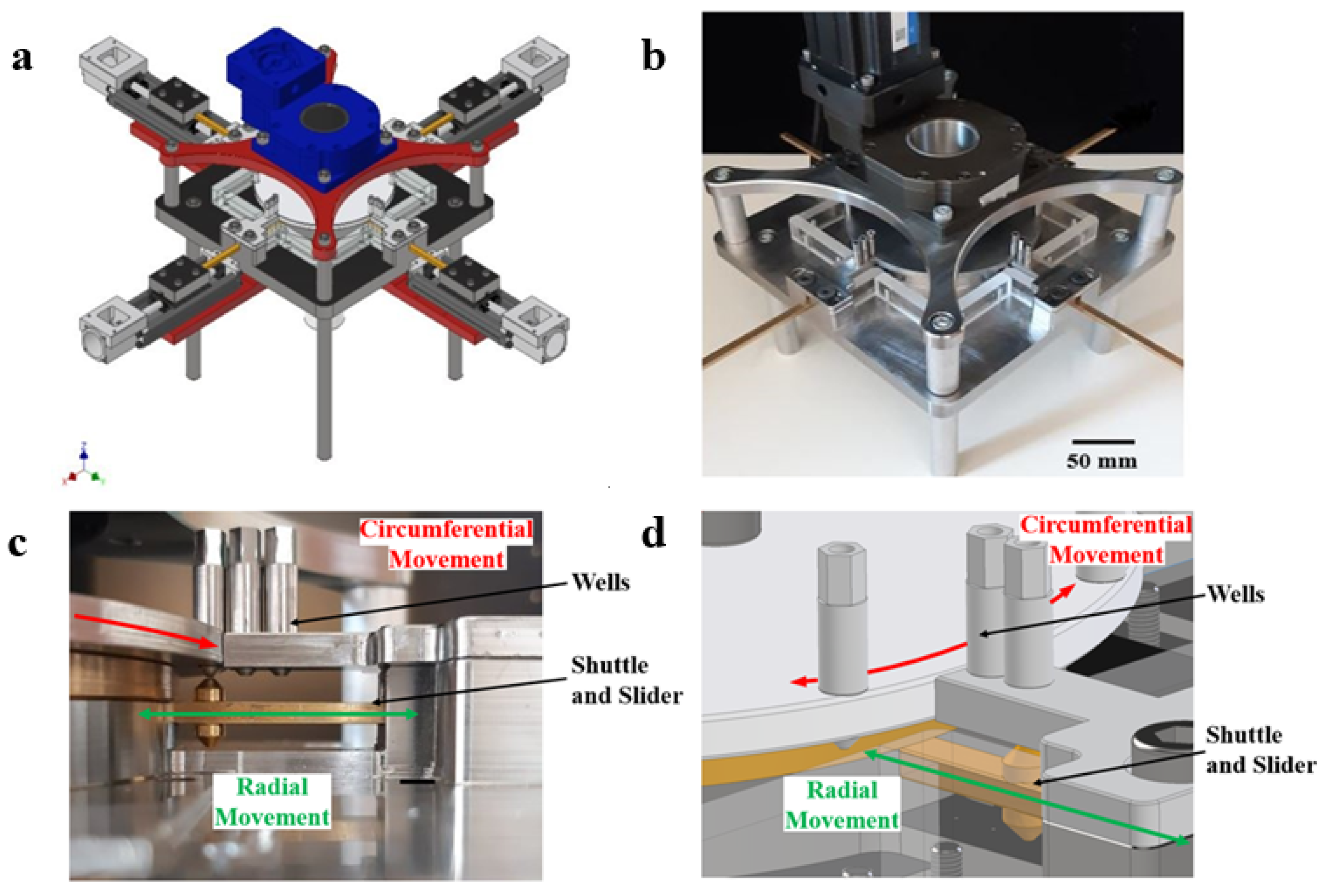
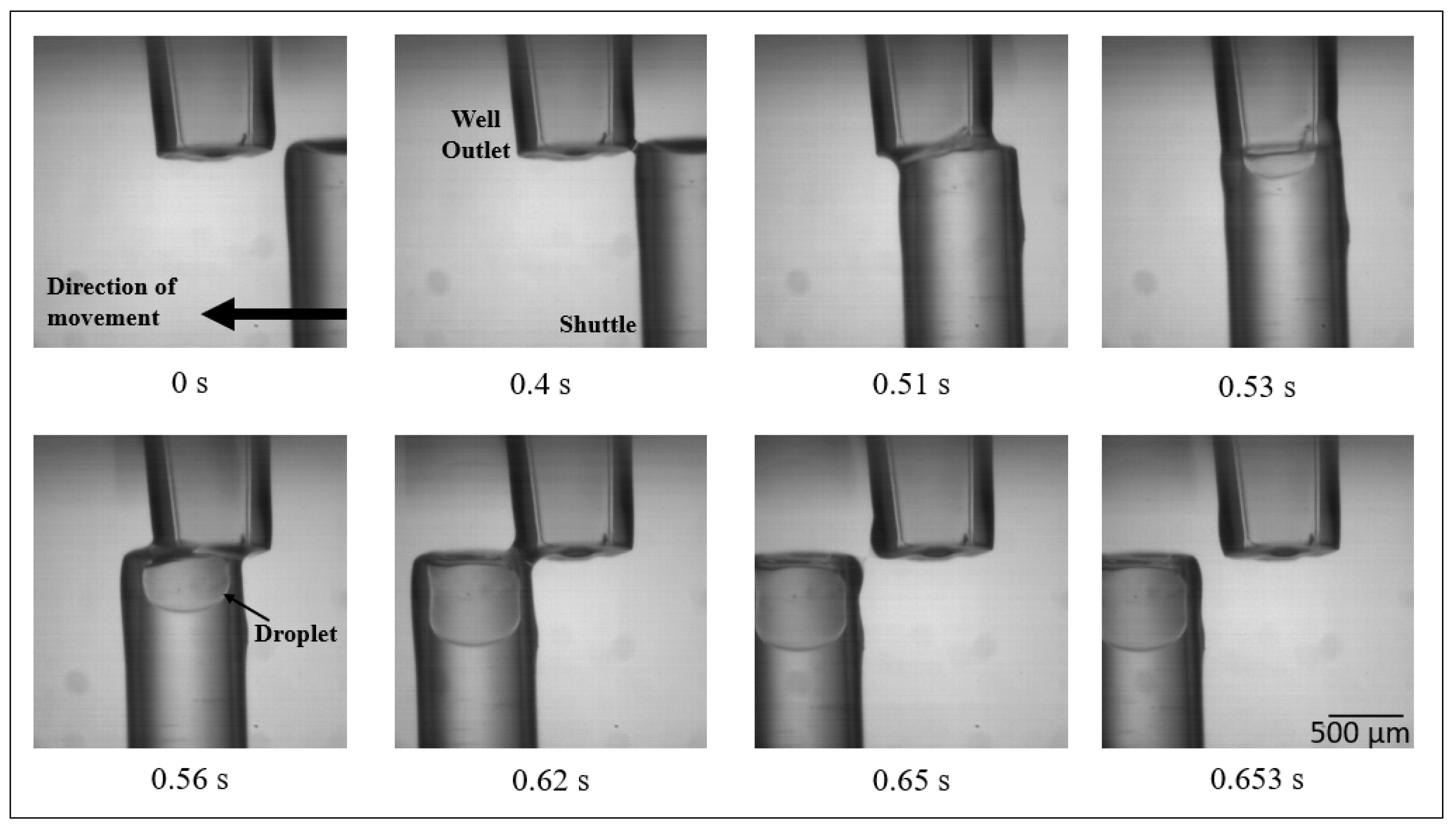
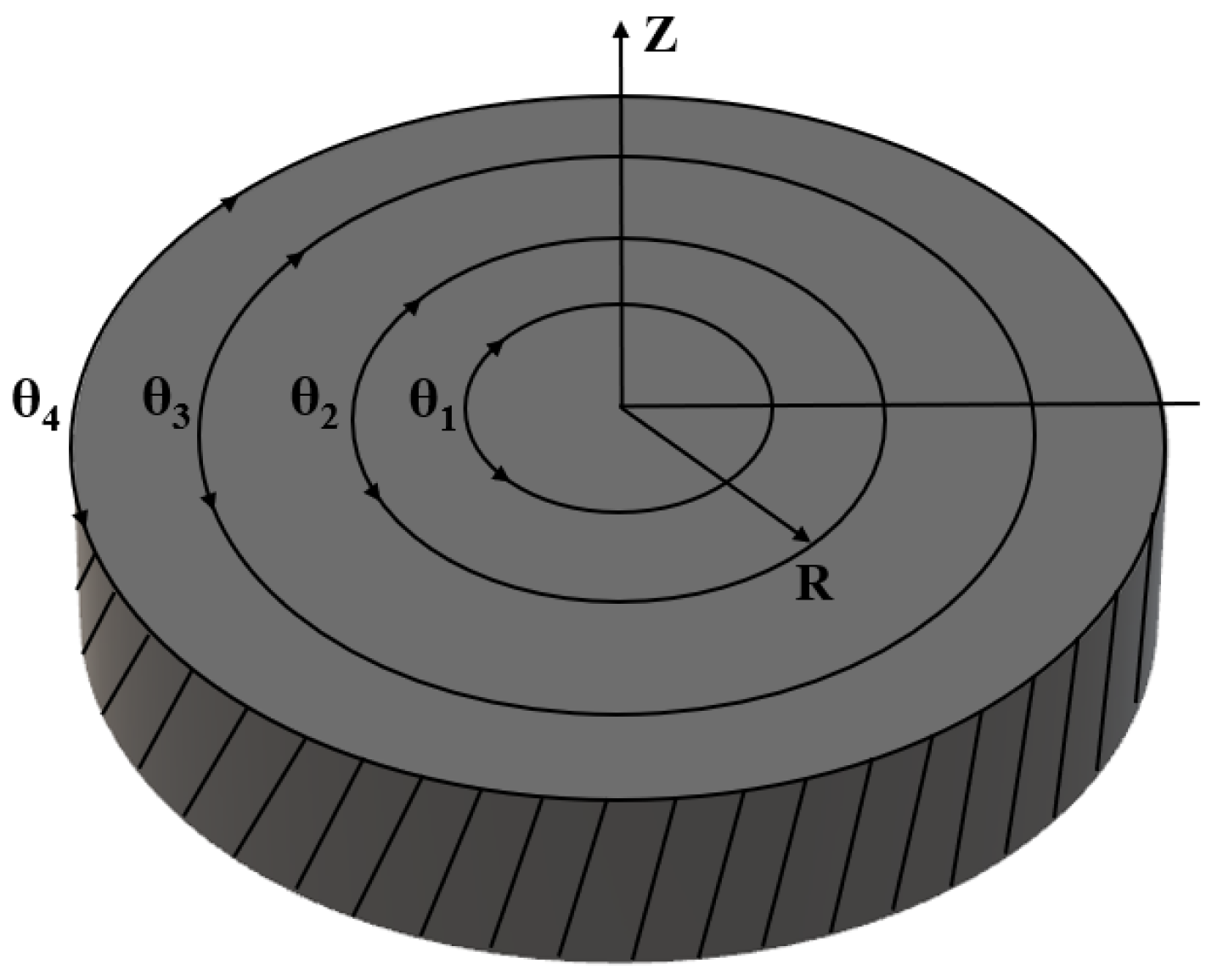
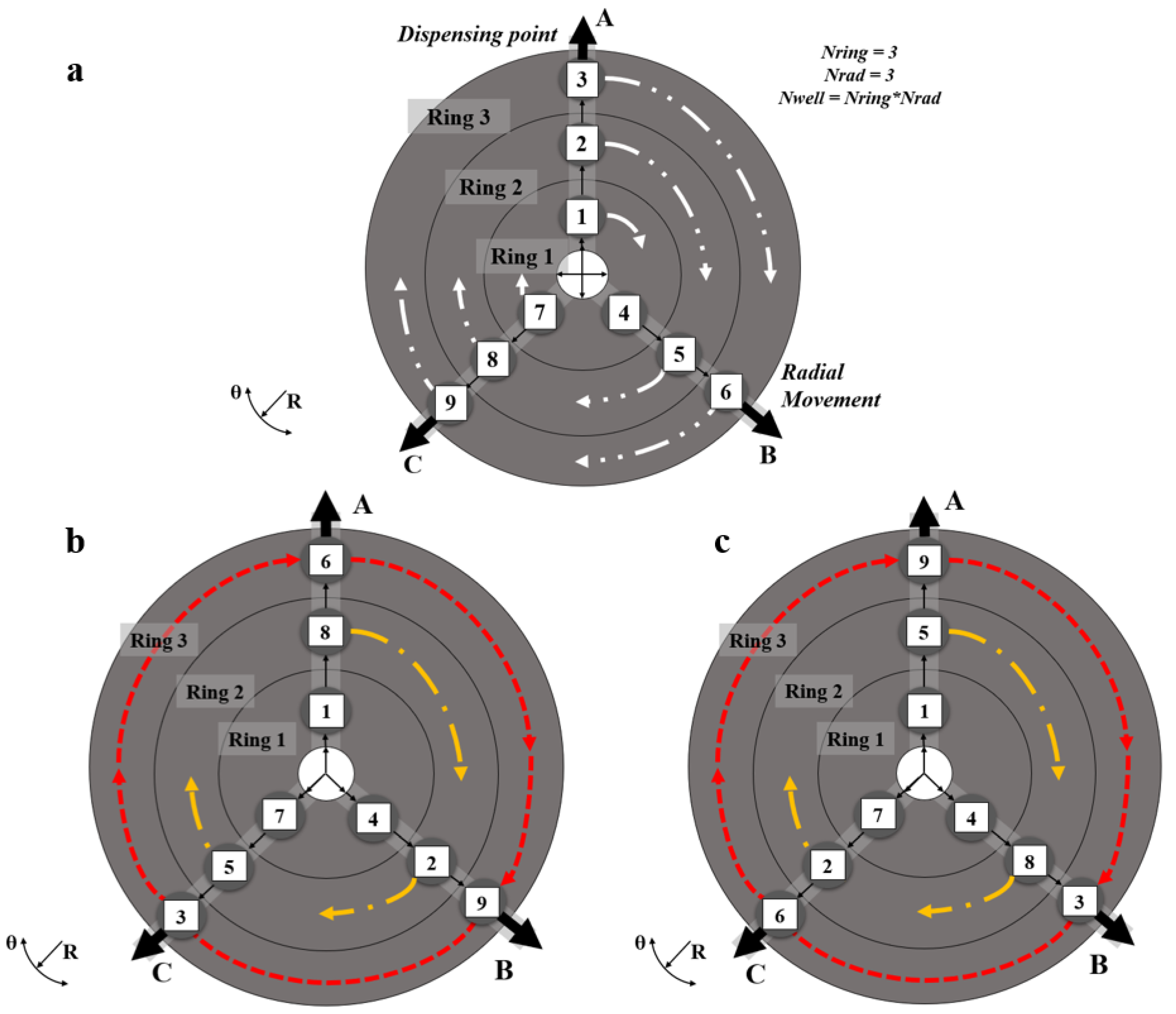
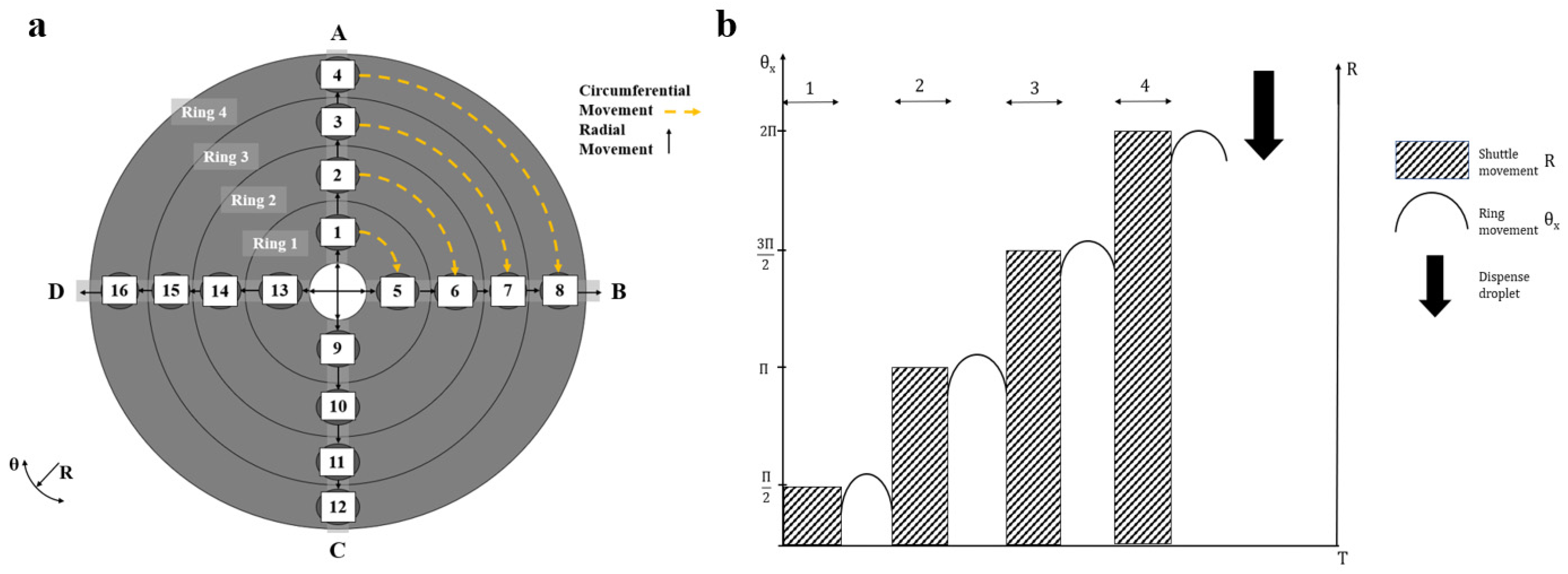

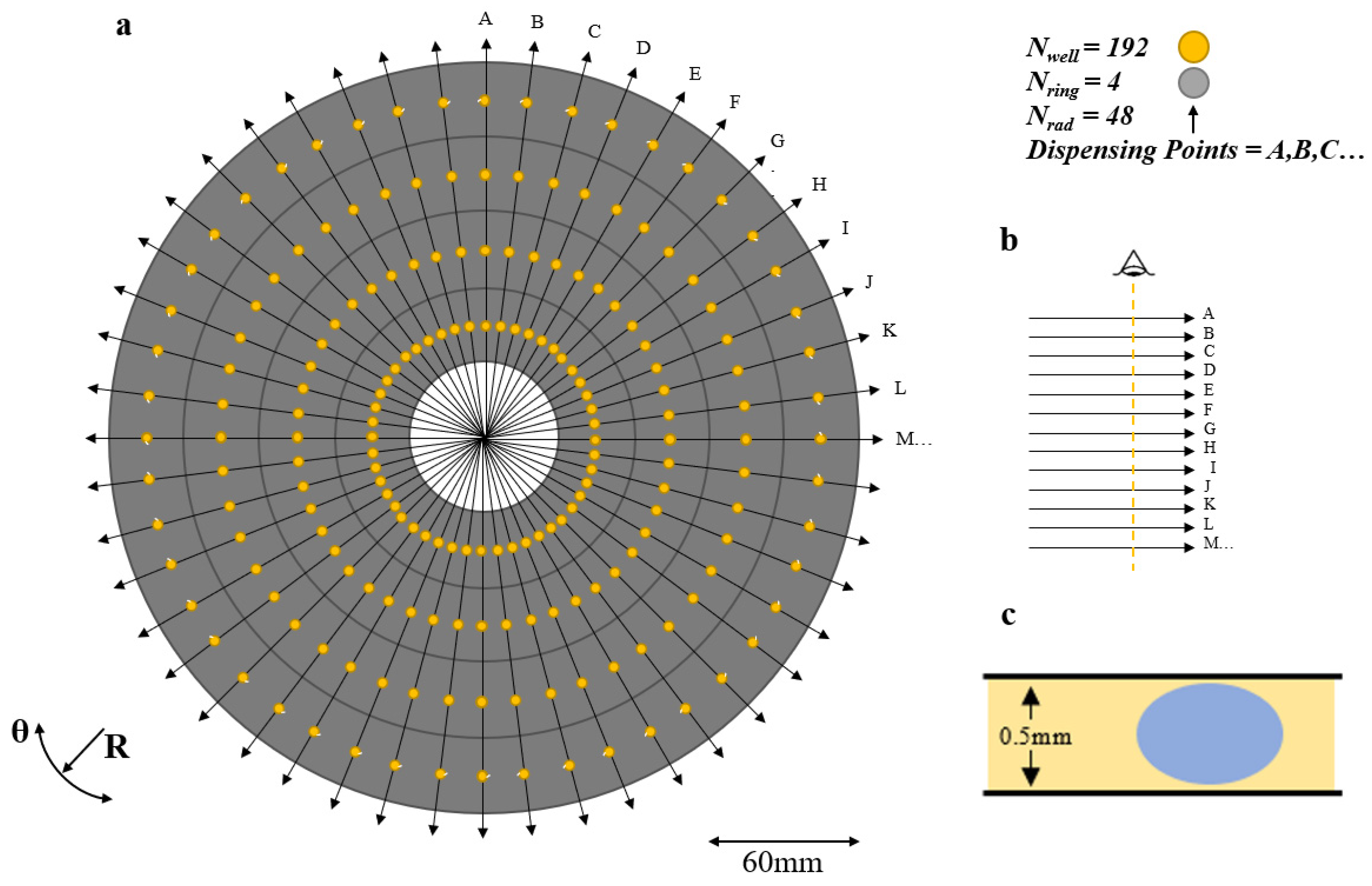
| r | Nrad | nCr | nCr′ | Nc′ | Nr′ | Np′ | Time (days) | Time ML (days), Single Ring, See ML Section |
|---|---|---|---|---|---|---|---|---|
| 2 | 2 | 6 | 4 | 2 | 2 | 2 | 0.0002 | 0.000001 |
| 2 | 3 | 15 | 12 | 6 | 6 | 4 | 0.0004 | 0.000003 |
| 2 | 4 | 28 | 24 | 12 | 12 | 6 | 0.0007 | 0.000007 |
| 2 | 6 | 66 | 60 | 30 | 30 | 10 | 0.001 | 0.00002 |
| 2 | 8 | 120 | 112 | 56 | 56 | 14 | 0.002 | 0.00003 |
| 2 | 10 | 190 | 180 | 90 | 90 | 18 | 0.002 | 0.00005 |
| 2 | 20 | 780 | 760 | 380 | 380 | 38 | 0.004 | 0.0002 |
| 2 | 30 | 1770 | 1740 | 870 | 870 | 58 | 0.007 | 0.0005 |
| 2 | 48 | 4560 | 4512 | 2256 | 2256 | 94 | 0.01 | 0.0014 |
| 3 | 3 | 84 | 27 | 3 | 24 | 9 | 0.001 | 0.000002 |
| 3 | 4 | 220 | 96 | 12 | 84 | 24 | 0.003 | 0.000007 |
| 3 | 6 | 816 | 432 | 60 | 372 | 72 | 0.008 | 0.00004 |
| 3 | 8 | 2024 | 1152 | 168 | 984 | 144 | 0.02 | 0.0001 |
| 3 | 10 | 4060 | 2400 | 360 | 2040 | 240 | 0.03 | 0.0002 |
| 3 | 20 | 34,220 | 21,600 | 3420 | 18,180 | 1080 | 0.13 | 0.0021 |
| 3 | 30 | 117,480 | 75,600 | 12,180 | 63,420 | 2520 | 0.3 | 0.0073 |
| 3 | 40 | 280,840 | 182,400 | 29,640 | 152,760 | 4560 | 0.5 | 0.0179 |
| 3 | 48 | 487,344 | 317,952 | 51,888 | 266,064 | 6624 | 0.5 | 0.0313 |
| 4 | 4 | 1820 | 256 | 4 | 252 | 64 | 0.007 | 0.000002 |
| 4 | 6 | 10,626 | 2592 | 60 | 2532 | 432 | 0.05 | 0.00003 |
| 4 | 8 | 35,960 | 10,240 | 280 | 9960 | 1280 | 0.15 | 0.0002 |
| 4 | 10 | 91,390 | 28,000 | 840 | 27,160 | 2800 | 0.3 | 0.0005 |
| 4 | 20 | 1,581,580 | 544,000 | 19,380 | 524,620 | 27,200 | 3.15 | 0.0117 |
| 4 | 30 | 8,214,570 | 2,916,000 | 109,620 | 2,806,380 | 97,200 | 11.3 | 0.0661 |
| 4 | 35 | 15,329,615 | 5,488,000 | 209,440 | 5,278,560 | 156,800 | 18.1 | 0.1263 |
| 4 | 40 | 26,294,360 | 9,472,000 | 365,560 | 91,06440 | 236,800 | 27.4 | 0.2204 |
| 4 | 48 | 54,870,480 | 19,906,560 | 778,320 | 19,128,240 | 414,720 | 48 | 0.4692 |
Publisher’s Note: MDPI stays neutral with regard to jurisdictional claims in published maps and institutional affiliations. |
© 2020 by the authors. Licensee MDPI, Basel, Switzerland. This article is an open access article distributed under the terms and conditions of the Creative Commons Attribution (CC BY) license (http://creativecommons.org/licenses/by/4.0/).
Share and Cite
Davies, M.; Abubaker, M.; Bible, L. A Flexible, Microfluidic, Dispensing System for Screening Drug Combinations. Micromachines 2020, 11, 943. https://doi.org/10.3390/mi11100943
Davies M, Abubaker M, Bible L. A Flexible, Microfluidic, Dispensing System for Screening Drug Combinations. Micromachines. 2020; 11(10):943. https://doi.org/10.3390/mi11100943
Chicago/Turabian StyleDavies, Mark, Mannthalah Abubaker, and Lorraine Bible. 2020. "A Flexible, Microfluidic, Dispensing System for Screening Drug Combinations" Micromachines 11, no. 10: 943. https://doi.org/10.3390/mi11100943
APA StyleDavies, M., Abubaker, M., & Bible, L. (2020). A Flexible, Microfluidic, Dispensing System for Screening Drug Combinations. Micromachines, 11(10), 943. https://doi.org/10.3390/mi11100943





